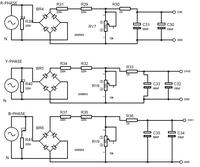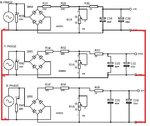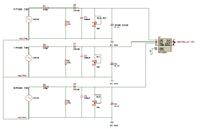Heavenlyrider
Newbie level 5

Hi,
i want to measure AC voltages of 3-phase supply using micro-controller through ADC. i have used three separate voltage divider circuits. when i measure any one of phase-neutral connection, the result of voltage is same as in external voltmeter. when measuring two or all phase-neutral supplies, i am getting mixed voltage values like 350V,440V respectively. how can i isolate the three phase values so that i can get 240V for each phase-neutral connection. i have attached the schematics of voltage divider circuit. Could any one help me with this problem?

Thanks & Regards.
i want to measure AC voltages of 3-phase supply using micro-controller through ADC. i have used three separate voltage divider circuits. when i measure any one of phase-neutral connection, the result of voltage is same as in external voltmeter. when measuring two or all phase-neutral supplies, i am getting mixed voltage values like 350V,440V respectively. how can i isolate the three phase values so that i can get 240V for each phase-neutral connection. i have attached the schematics of voltage divider circuit. Could any one help me with this problem?

Thanks & Regards.





